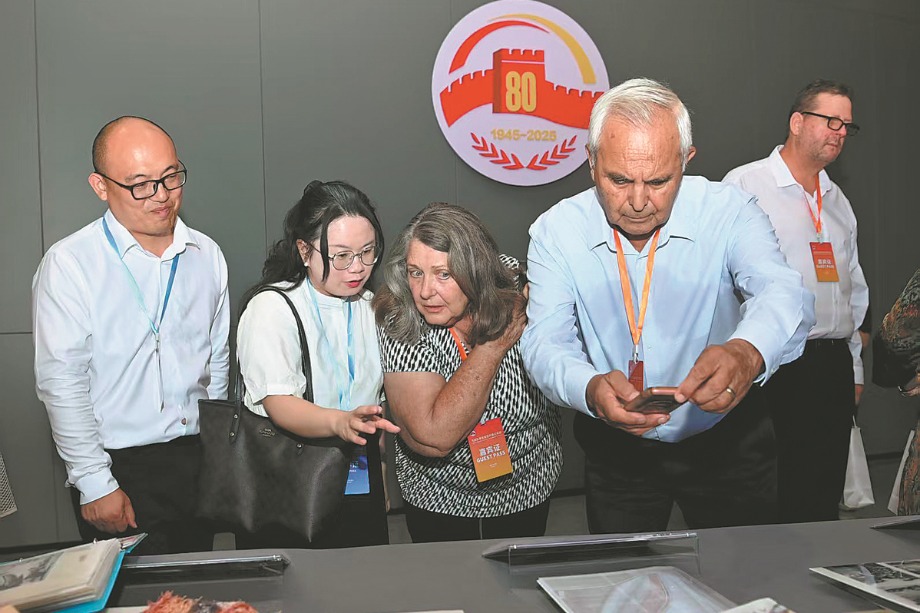Xi Story: Xi's Digital Silk Road vision accelerates China-ASEAN trade sync

NANNING -- At daybreak in Youyi, a bustling town in South China, trader Li Youbao followed his usual routine: logging onto an e-commerce platform to place orders.
With just a few taps on the phone, Li purchased 200 kilograms of Vietnamese cashews, and almost instantly, a vendor in Vietnam confirmed the order. By the evening, the shipment had already crossed the border to Guangxi Zhuang autonomous region, where Li lives.
This seamless transaction embodies President Xi Jinping's vision of stronger digital connectivity between China and the Association of Southeast Asian Nations (ASEAN), a 10-nation bloc with about 700 million people.
The platform Li uses integrates transaction, customs clearance, finance and logistics services in a single system. It is part of the China-ASEAN Information Harbor (CAIH), a flagship project under Xi's signature Belt and Road Initiative (BRI) and a key element of his call to build a "Digital Silk Road" with ASEAN nations.
The Digital Silk Road is transforming the daily work of thousands of cross-border traders, including Guangxi-based fresh produce importer Cai Zhenyu. "For my fast-spoiling cargo, every minute counts," Cai said, noting that new digital systems have slashed the customs clearance time from hours -- or even days -- to just minutes.
"The accelerated development of the Digital Silk Road has become the new camel bells and billowing sails of international trade in the new era," Cai added.
The CAIH project, in particular, links China with its ASEAN neighbors via a network of fiber-optic cables stretching from Guangxi. It's being developed into a hub for communications, big data, next-gen tech, and collaboration in the digital economy.
Headquartered in the regional capital Nanning, CAIH's operator showcases the vitality of cross-border e-commerce on a giant screen in the company's exhibition hall.
It glows with real-time trade data, numbers ticking upward as tea, electronics and machinery flow south to ASEAN nations, while tropical fruits, snacks and consumer goods stream north into China. Lines representing land cables and outbound routes radiate from Nanning, crossing mountains and seas to form a network that spans Southeast Asia.
Xi stood before that very screen at the first stop of his inspection trip to Guangxi in December 2023, right after a state visit to Vietnam.
On display at one side of the exhibition hall were Thai coconuts, Vietnamese mangoes, Lao fragrant rice and Malaysian coffee, alongside Guangxi's tea, river snail rice noodles, ceramics and home appliances.
Upon hearing staff say these were popular products in bilateral trade, Xi nodded in approval.
"The building of the China-ASEAN Information Harbor is an important measure to promote BRI cooperation and to enhance connectivity between China and ASEAN countries," Xi said as he toured the facility.
Xi has shown great foresight in developing digital technology. At the start of the century, when only about one in every 100 Chinese had internet access, Xi, then governor of Fujian province, introduced the concept of "Digital Fujian." After becoming China's top leader, he has actively promoted the building of a "Digital China," while leading the country to become a global powerhouse in digital technology and applications.
In 2017, Xi raised the idea of the Digital Silk Road to advance BRI cooperation in areas such as the digital economy, AI, nanotechnology and quantum computing.
In 2020, at the opening ceremony of the 17th China-ASEAN Expo, Xi called for enhancing digital connectivity and building the Digital Silk Road with ASEAN.
Since then, CAIH has accelerated its development, establishing digital economy industrial parks and computing power centers serving ASEAN countries. Cooperation platforms for cross-border tourism, trade, logistics and healthcare have been set up, with technologies like the BeiDou Navigation Satellite System introduced in countries such as Thailand and Laos.
"In recent years, CAIH has developed and managed a suite of cross-border service platforms that significantly boost the efficiency and ease of international trade," said Gan Qiuling, executive president of CAIH.
The 22nd China-ASEAN Expo, which opened in Nanning on Wednesday, spotlighted new opportunities unlocked by digital connectivity.
This year's event has drawn over 3,200 enterprises from 60 countries. The stalls are filled with fragrant tropical fruits from ASEAN, while Chinese electric vehicles gleam on a nearby display. Young ASEAN entrepreneurs team up with Chinese partners through livestreaming, with digital payment systems enabling instant transactions.
Amid global trade uncertainties, China-ASEAN economic ties have remained resilient. For five straight years, each has been the other's largest trading partner. In the first half of this year, bilateral trade surged 9.6 percent year-on-year to 3.67 trillion yuan (about $516.8 billion). The trade mix is also evolving, with a notable rise in new energy cars and unmanned aerial vehicles.
As the permanent host of the China-ASEAN Expo, Guangxi -- China's only provincial-level region with both land and sea links to ASEAN -- has long been at the forefront of China-ASEAN cooperation.
In his Guangxi inspection two years ago, Xi called on the region to strengthen information infrastructure and its application to drive high-standard opening up and boost cooperation with ASEAN nations.
He further emphasized advancing high-quality BRI cooperation and expanding development opportunities during his April visits to Vietnam, Malaysia and Cambodia. A record 108 cooperation documents covering from infrastructure to the digital and green economies were signed during the trips.
Businesses are benefiting from these initiatives. At the expo, Tan Yunfeng, representing a health-product company, engaged intently with counterparts from Malaysia and Indonesia.
This year, more than 10 of his company's products, from floral-infused personal care items to herbal skincare, entered the Malaysian market via e-commerce platforms like Lazada and Shopee.
"E-commerce has enabled our products to go global. With sales climbing, we have strong confidence in the ASEAN market," said Tan. "More and more enterprises are discovering new growth pathways on the Digital Silk Road."
- Xi Story: Xi's Digital Silk Road vision accelerates China-ASEAN trade sync
- Chinese scientists develop first hydride ion prototype battery
- Security minister warns of growing cyberthreats
- PLA ready to thwart any external interference in Taiwan question at any time: Defense Minister
- HK to focus on economy and livelihoods
- Film on atrocities of Japan's Unit 731 premieres





































